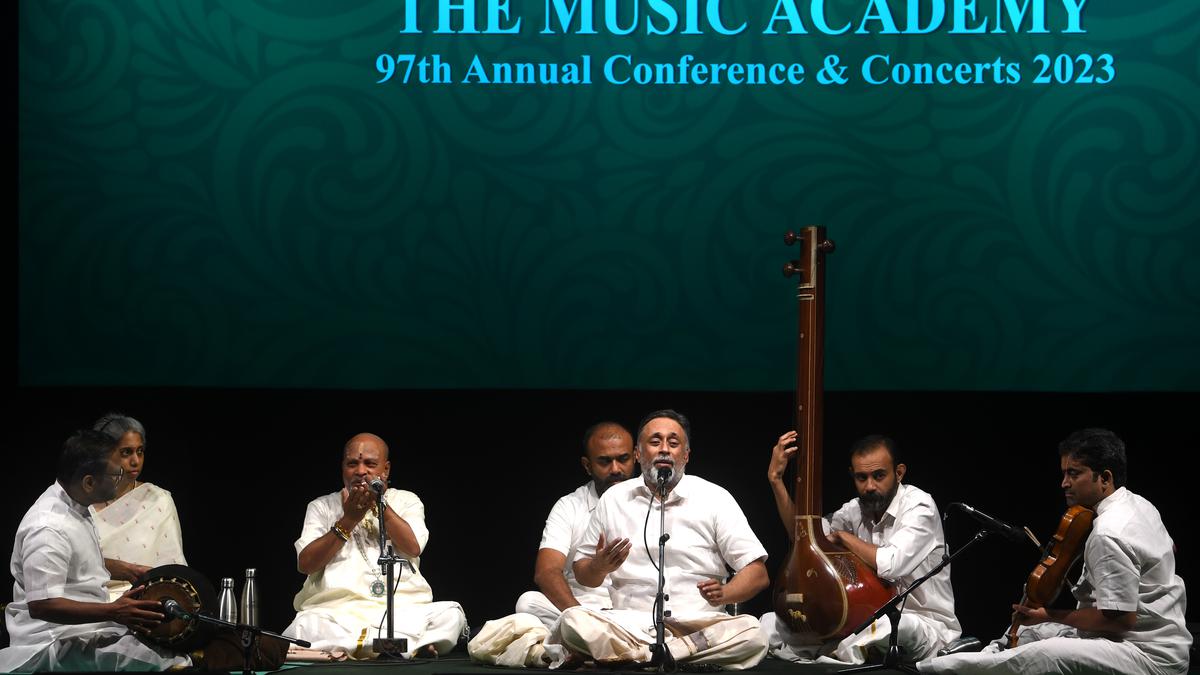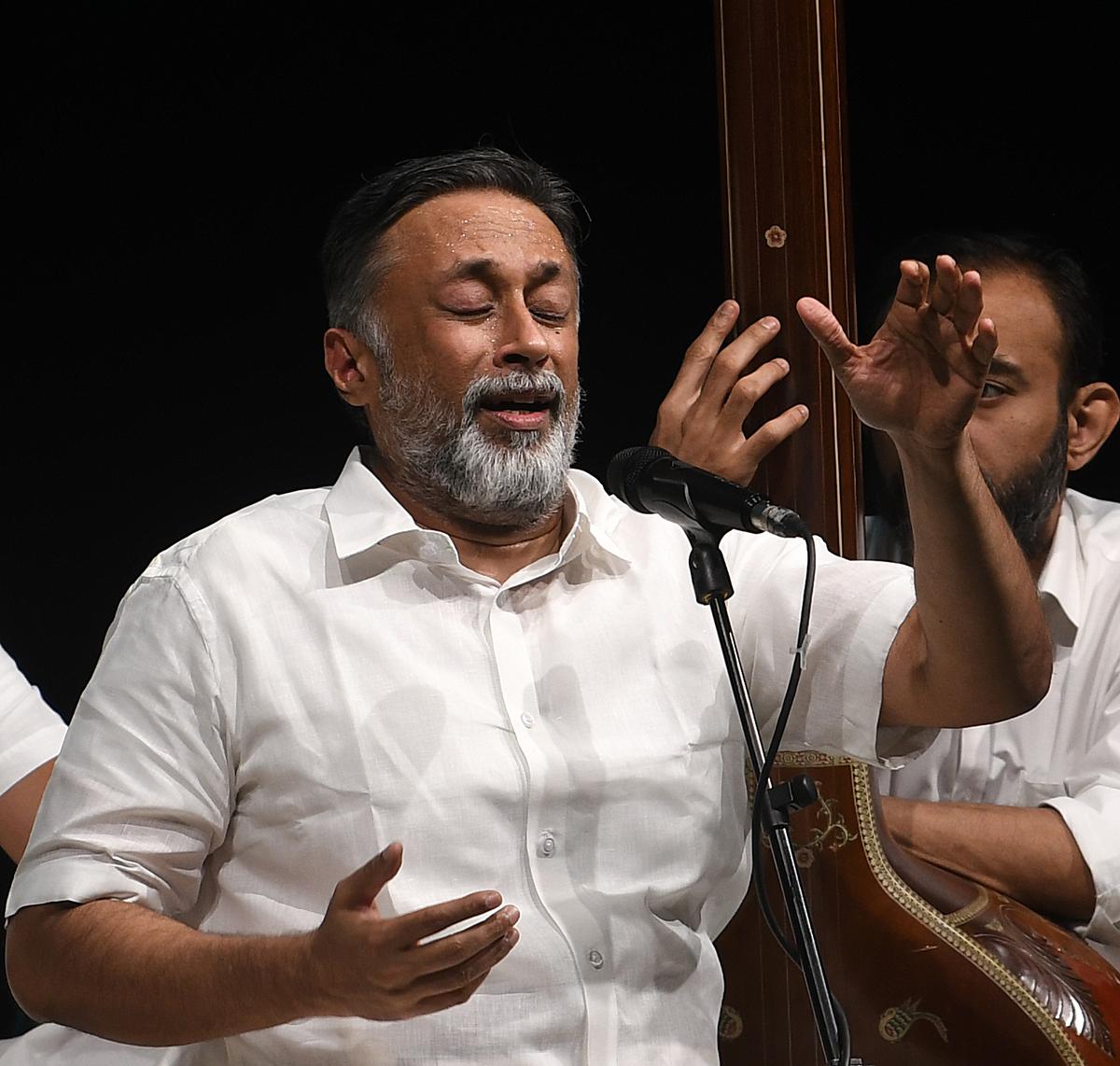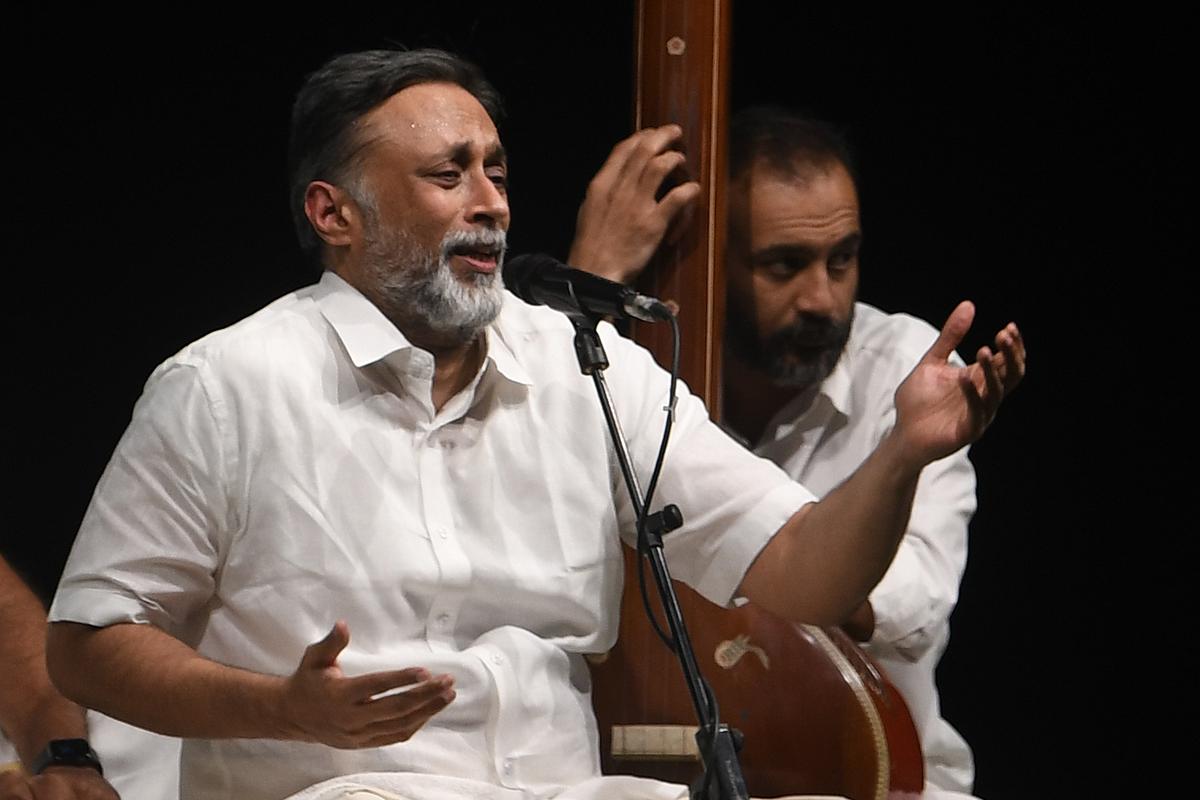- January 9, 2024
Sanjay Subrahmanyan’s concert was an experience that remained with the rasikas

Sanjay Subrahmanyan performing at the Music Academy’s December festival, 2023, in Chennai
| Photo Credit: S. R. Ragunathan
The success of any contemporary Carnatic concert is about how much the experience lingers. It’s not about the songs, the overall mood or the ragas, but about how differently you were tempted to look at a raga, its construction and the intrinsic emotion — all because of the way it was presented. A raga is a physical construct built on a lot of abstraction. It is a ripple in the ether around it that creates its own form and disappears. Still, a concert is not just a raga or set of ragas, but the whole self-generative experiential bouquet that artistes thoughtfully present before you. How much of that sticks with you?
In that context, Sanjay Subrahmanyan’s the Music Academy concert on December 27 was an experience that could stay with you for some time, particularly because of the grand ragam tanam pallavi in a tricky Manirangu (a raga that can mimic two very common and popular ragas), and his exposition of Vanaspati, a rather rarely-heard Vivadi raga. Artful renditions of a Sahana, that can otherwise tire you with its ‘rakthi’ if excessively indulged in, and a resplendent Khamas that literally danced before you, mainly because of the choice of the composition and how it was treated, added extra wings. But the Vanaspati and Manirangu were good enough to be the sturdy framework from which the concert took its might.
Manirangu is a raga that can often confuse the listener, and less experienced singers too, because of its similarity with Madhyamavathi and Sree. It’s not just the extra note or the absence of it, or how it’s featured, but the way the whole thing is conceived and skilfully presented. As the great American conductor-musician Leonard Bernstein, whose life was made into a movie recently, would say in his famous educational classes for children: music is not just about the notes, but also what happens between them.

Sanjay Subrahmanyan skillfully conceived and presented the concert.
| Photo Credit:
S.R. Ragunathan
Here’s exactly how you differentiate between mastery and mere singing. The way Sanjay handled the notes, with the judicious use of gamakas at the right places and keeping it straight whenever needed, even while embellishing it with his proprietary voice mannerisms and aesthetic dynamics made the raga quite arresting — the raga as an organism that has a life of its own.
Violinist S Varadarajan, whose style can be considered to be the gayaki of Sanjay when he is on stage with the latter, played with the same precision, aplomb and aesthetics. The way Sanjay topped up with Jog, followed by Patdeep, in the ragamalika added some extra flourish. Varadarajan’s ‘quoting’ of a famous Malayalam movie song in Jog was a fleeting tease that the audience instantly recognised and cheered to. What made the RTP even more memorable and dramatic was how Sanjay seamlessly drifted to the intensely soulful Swati Tirunal bhajan ‘Gopala bhakthim dehi’ tuned by Chalakkudi Narayanaswamy in Bageshri, a raga in which he is a master.
‘Vanadurge Vanaspati’ the less-heard Harikesanallur kriti in Vanaspati, was a compact composition that concealed quite a bit of mysterious beauty, particularly because of its vivadi flavour and Sanjay’s exposition. Even while being effusively aesthetic, the gamaka-rich alapana let one touch and feel the scale with specific accents to the key notes. It was like the image of the raga clearly and constantly emerging through the tapestry of an array of sounds, sometimes flickering, sometimes staying long enough for you to figure out.

Sanjay singing had an emotional appeal.
| Photo Credit:
RAGHUNATHAN SR
The chittaswaras created by Sanjay himself (starting with pa dha ni dha pa ma ga ri sa ri ga) made the images clearer. Compared to available recordings of the same composition, this rendition had kalpanaswaras too.
The other ragas presented were Sankarabharanam, Gowla, Kapi and Gopikathilakam.
‘Sami mayura giri vadivela’ by Mazhavai Chidambara Bharati was literally the dance of the peacock that carried Muruga. The gait, the swing, the speed and the proportion dazzled. An example of how sound can set free your visual imagination. What made it more dazzling was how Neyveli B. Venkatesh (mridangam) and B. Rajasekhar (morsing) wove the rhythms. In fact, they were both judicious as well as flamboyant in making the concert an ensemble performance. As usual, Sanjay’s music had a lot of heft, but no bluster. It had a lot of emotional appeal, but was not overly sentimental.




